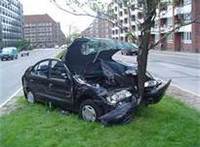NEWPORT BEACH, CA--July 25, 2012: Bisnar | Chase Personal Injury Attorneys, LLP (Best Attorney ) of Orange County, California today outlined the five most important safety features in cars to help motorists avoid catastrophic injuries and death on the heels of a report by the National Highway Traffic Safety Administration that shows U.S. traffic fatalities soared 13.5 percent in the first quarter of 2012, a significant increase over the same timeframe a year ago.
“While certain safety features like electronic stability control and antilock brakes come standard on new cars, pay particular attention to used car safety equipment, especially on older models”
According to the report, an estimated 7,630 people died in motor vehicle traffic crashes for the first quarter this year. That's a 13.5% increase over 6,720 fatalities in the first quarter of 2011, according to NHTSA.
"While certain safety features like electronic stability control and antilock brakes come standard on new cars, pay particular attention to used car safety equipment, especially on older models," said Brian Chase, partner at Bisnar | Chase and auto defects expert. "If you can, it's worth the added investment to pay more for a late model used car with advanced safety features, or a vehicle with added equipment versus a stripped down model."
1) Electronic Stability Control
When a car goes in a direction different than the position of the steering wheel, Electronic Stability Control (ESC) uses steering angle sensors and wheel sensors to assist with braking, to help a driver maintain control. ESC was introduced in a few cars in 1995 and is standard in all 2012 models.
2) Antilock Brakes
Antilock braking systems (ABS) prevent wheels from locking up during emergency braking by automatically regulating brake pressure, enabling the driver to maintain control while helping the car stop in the shortest possible distance. In 1987, ABS came standard on some vehicles and optional on others. It's now standard on all 2012 models.
3) Side Curtain Airbags
During a side impact crash, side curtain airbags inflate to protect your head and/or your chest. Unlike front airbags, side curtain airbags may stay inflated for a longer period of time to protect occupants during a rollover. Side curtain airbags were introduced in 1998 and are standard or optional on many new cars today.
4) Rear Center Seat Lap/Shoulder Belts
Some vehicles are equipped with a lap belt in the rear center seat, not a shoulder and lap belt combination which is a much safer option in preventing severe injuries and death. Lap/shoulder belt combinations became law-mandated standard equipment in all rear center seats beginning in 2007.
5) Collision Warning Systems
Today, there are a number of new cars that come equipped with advanced collision warning systems, including forward collision and lane departure warnings. Collision warning systems use radar to detect when vehicles or objects come within dangerous proximity to the vehicle and will issue audio or visual warnings to alert the driver of the hazard.



